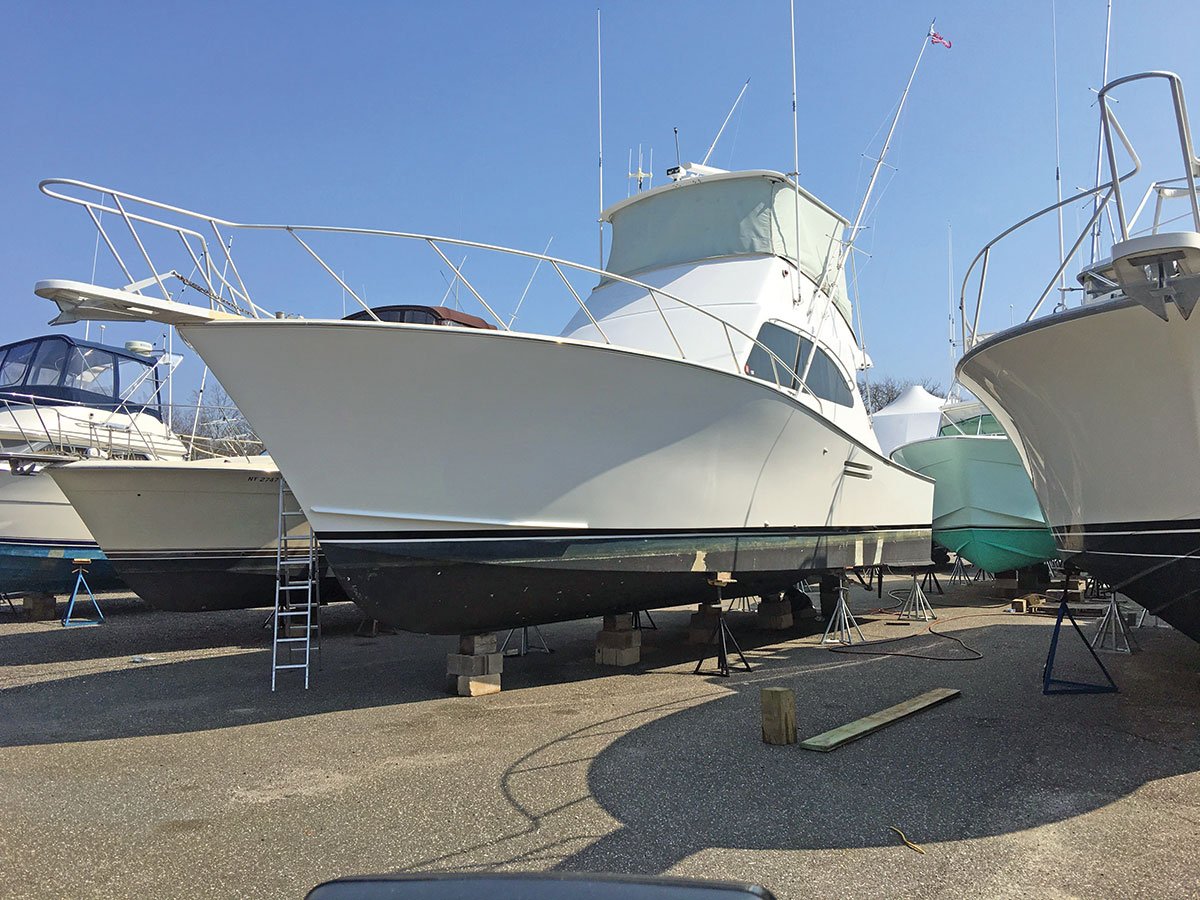
The northeast is known for its harsh winters, and while the Farmer’s Almanac predicts a mild, wet winter for 2020, don’t be fooled; the Canadian jet stream can and will dip to the south giving us arctic blasts. It doesn’t take much and the weather can wreak havoc on your boat if not properly prepared for the winter layover. There are many preventative steps that must be taken in the fall to ensure no issues arise in the spring, and he are some general procedures for vessels being stored out of the water. There is no “one size fits all” checklist. However, there are some general procedures and practices that should be followed at the conclusion of each season.
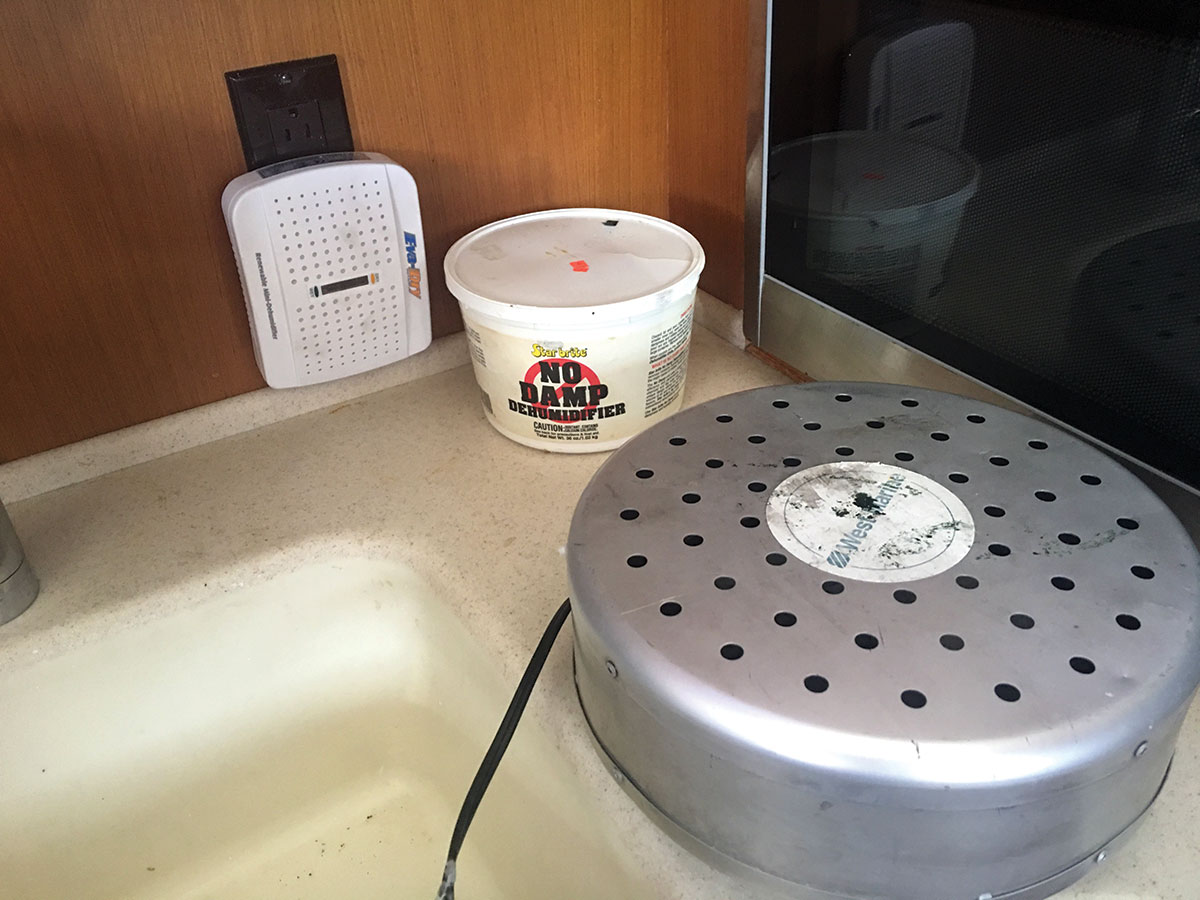
Freezing water is one of the biggest concerns with winter storage. Water that is left or allowed to pool in any area of a boat can potentially result in costly damage. When water freezes it expands and is capable of cracking fiberglass, PVC, plastic and even metal. Keep in mind that even though you may have completely removed all water, rain can reintroduce water into drains, scuppers and the likes. These areas need to be sealed, covered or protected with antifreeze.
To begin the winter preparation, power wash the bottom of the boat when it is removed from the water. Power washing will remove not only the growth but some bottom paint as well. When working with removal and application of bottom paint you must pay special attention to your yard and local environmental rules. If the yard allows you to work with bottom paint (application or removal) you must spread a tarp to catch any flakes. A tight mesh tarp that allows water to pass through, but strains and catches particles, is best. The reason you power wash now is that growth will work its way into the pours of gel coat, dry and harden there, so any organic material will be easier to move while it is wet and fresh. The longer it stays on the boat, the deeper it goes. If left alone it will dry and become a major project in the spring, so do it now. Bottom paint should be applied in the spring pre-launch as per manufacturer’s directions.
Assuming your vessel is out of the water, batteries should be removed. However, don’t remove batteries from any boat that may need bilge pumps. Storing batteries in a cool, dry area such as a basement or garage is preferred. Do not store them directly on concreate as it may prematurely discharge them. Instead, place a piece of wood between the battery and the floor. Make sure the battery is fully charged prior to long-term storage as a fully-charged battery will not freeze. If the battery freezes it may crack, and then when it thaws you will have a ruined battery to dispose of and a mess to clean up. Using a trickle charger to ensure the battery maintains its charge is ideal, but if this is not an option, recharge your battery every three to four weeks with a regular charger.
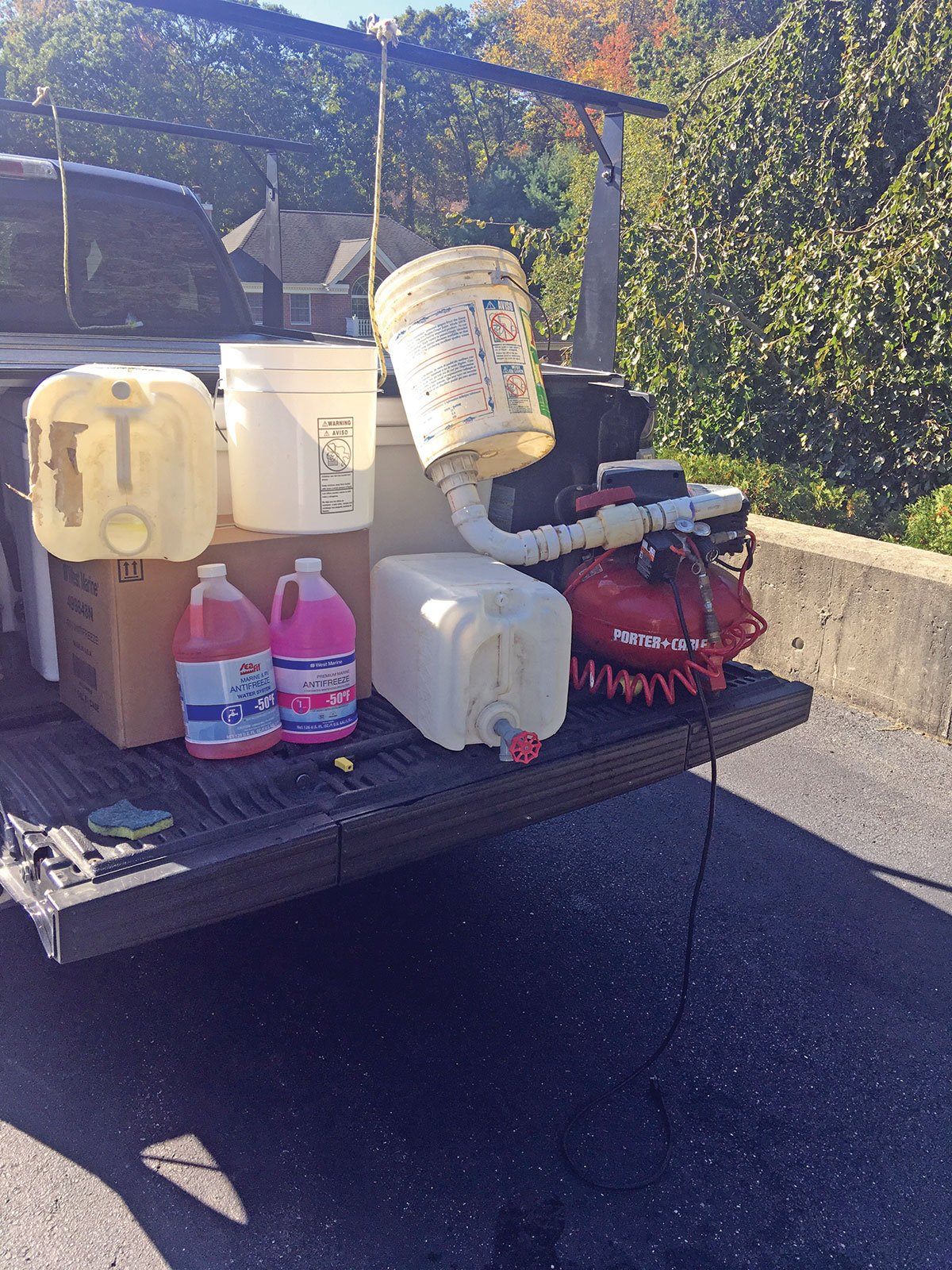
The benefits of changing your oil before any layup is not intuitive and may seem to be a waste of time, but never the less it should be done now. There are contaminants that build up in engine oil during the season. For the most part they are caught in the filter and are removed when the oil and filter are changed. Since the engine is sitting idle for the winter, if these contaminants are allowed to pool they can corrode internal components.
Antifreeze needs to be run through the engine as well. A water-cooled engine is susceptible to freezing and cracking. For outboards use flushing ears connected to a hose that allow you to run antifreeze through the motor. For inboards remove the saltwater intake hose and add the chemicals directly. There are many manufactured winterizing devices on the market that are reasonably priced and readily available. I use a 5-gallon bucket that has a drain mounted to the bottom. It is simple to make and allows for easy control and regulated flow. Once everything is in place start the motor and run it until the bucket is empty, or you see antifreeze clearly running out of the exhaust. Never run the engines dry as you will ruin the impeller and possibly the water pump.
If your motors are carbureted and require fogging, do these processes simultaneously. Spray the fogging oil in as the engine is sucking up the antifreeze. Blast it with a heavy dose to stall the engine or have someone shut it off before your bucket runs dry. It is also suggested that each spark plug is backed out and the cylinders fogged as well. Fogging is simply coating internal metal components with a low-viscosity oil mist to prevent any condensation damage.
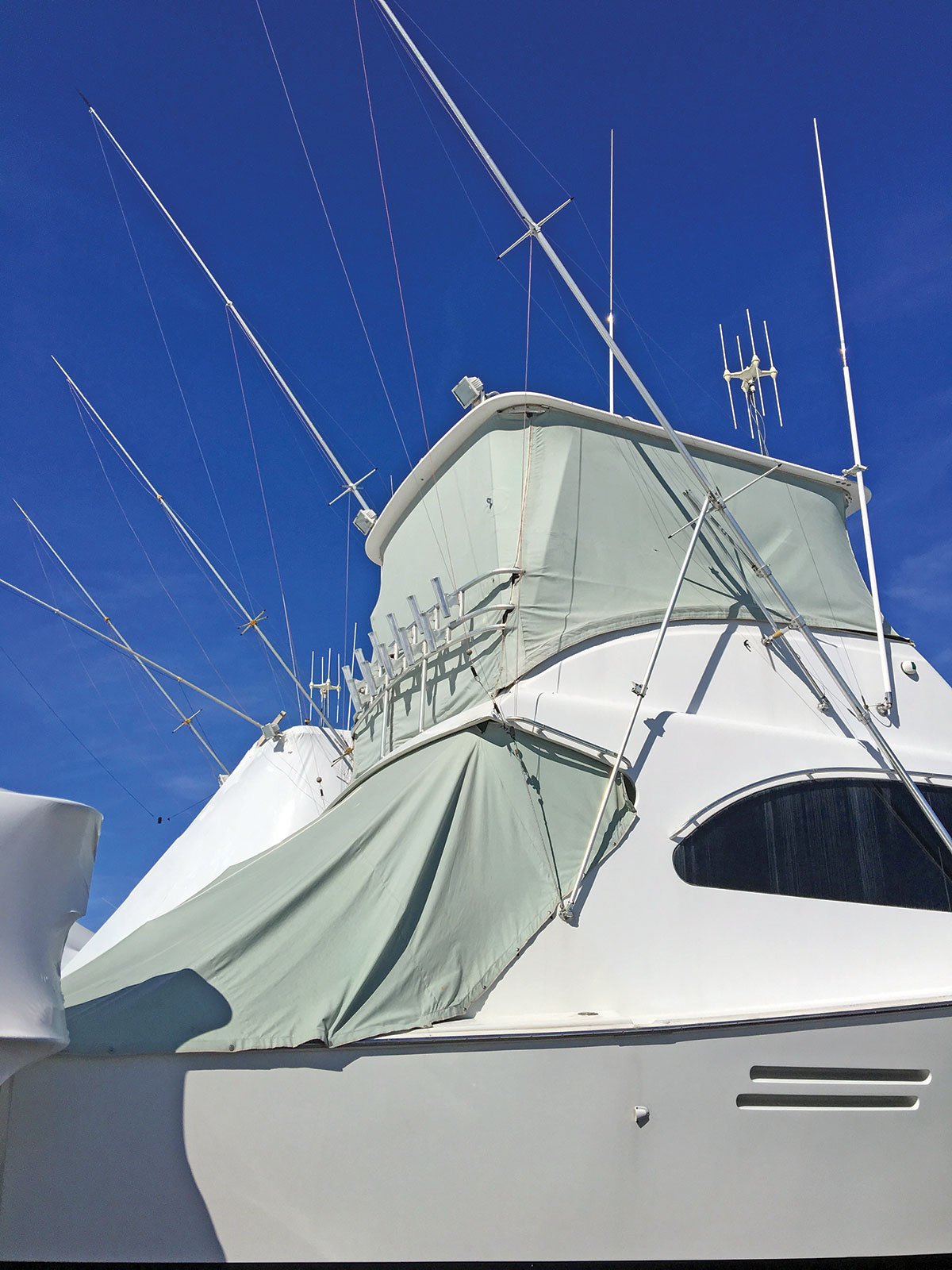
When winterizing water systems, freshwater and saltwater wash downs, holding tanks, toilets, shower pumps, sinks, ice makers, bait wells etc., the first step is to completely empty and clean when possible. Like a home’s sprinkler system there are instances where you can use air to purge a closed system. The big advantage here is for sinks and showers. There is nothing worse than funny tasting or feeling water in the spring. If you never put antifreeze in the water tanks you eliminate having to flush them during the spring commissioning. If air is not possible run a good amount of antifreeze though the system. For self-priming pumps (salt/fresh water wash downs) remove the hose from the supply side (to the pump) and put it in a bucket of antifreeze. Run the pump until you visually confirm it is coming out the other end (hose nozzle.)
A good cleaning and waxing of the hull are a great way to protect it during the winter. Wrapping the top sides with shrink wrap or a removable boat cover is also recommended. Whatever you use make sure it fits snug with no loose ends. Flapping ends can scratch and put wear marks into the gelcoat, so make sure everything is secure. Use a frame and supports to ensure the cover is tight and pitched in a manner that water and snow will run off the cover and not collect anywhere. If it’s allowed to pool it can weigh down and ruin the cover. Enclosures should be cleaned, dried and removed. When stored, layer them with old beach towels or sheets between the plastic to prevent scratches and mold from building up.
Mold can be another off-season problem, and there are many products on the market to dehumidify your boat while laid up for the winter. The chemical-based ones require no power. There are many brands available, and they are basically the same. Strategically place them throughout your boat and let them do their work. Star Brite makes one that collects water in a separate container. You can add more beads as needed and should pour out the water as it collects. Eva Dry makes a reusable system. As the gel collects water the color changes. When it becomes orange you plug it in and an internal heating element dries the silica gel packs. Once the color is changed back to green power is no longer needed.
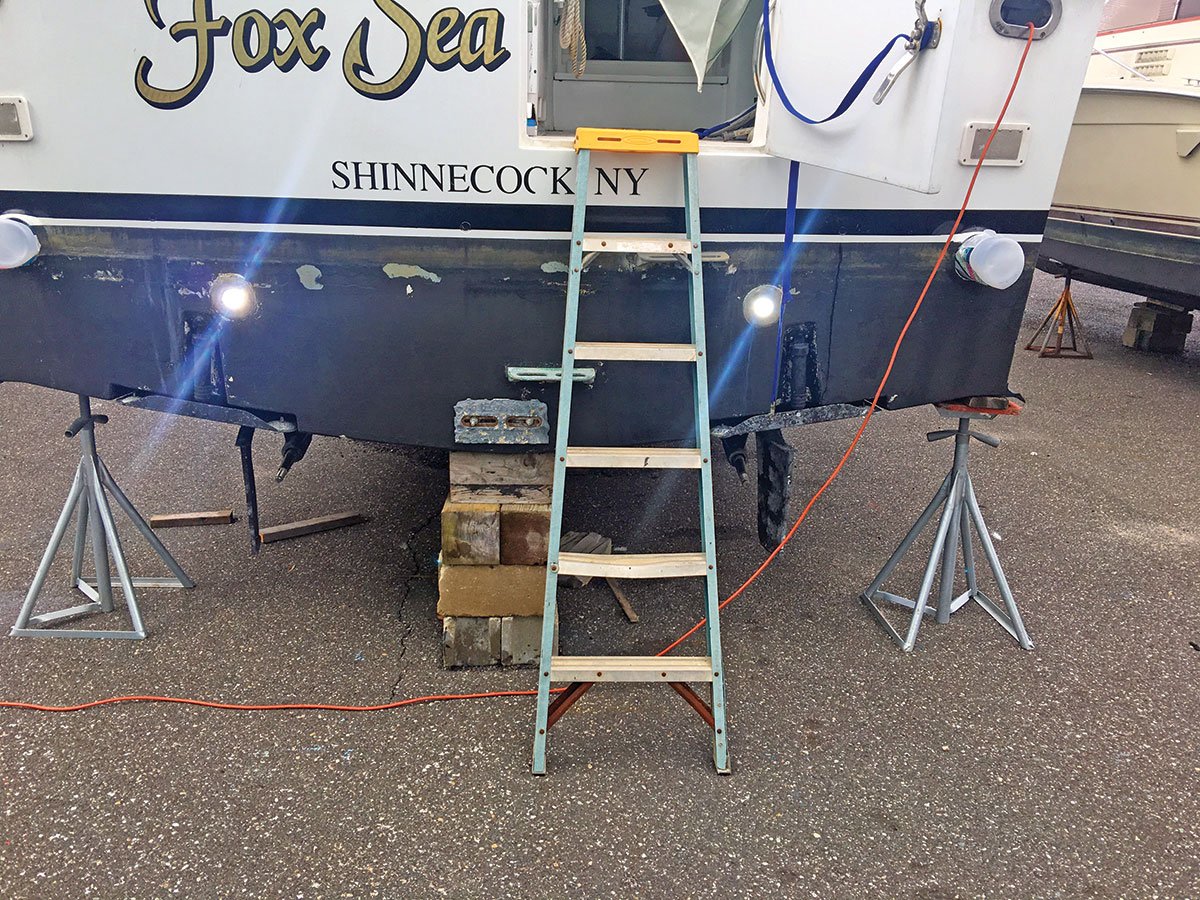
Pancake dehumidifiers are very affective but require a constant power source. These are enclosed, silver-colored fans with internal heaters. They work great because not only do they dry the air, but they circulate it, which prevents water from pooling up on cold surfaces. They draw very little power but do require electric. It’s a good idea to pair these with a timer switch, which will enable it to kick on and off for a few hours at a time. Charcoal briquettes are a natural water absorber, too. These are a great, inexpensive option that can be scattered throughout drawers, lockers, compartments etc.
Be sure to visit the boat throughout the winter, and don’t just set it and forget it. If you don’t have any winter projects on tap, schedule regular trips to inspect her. Check that things appear normal. The cover should not be compromised, check the vents for animal nests, and just give it a good visual inspection.
Make a custom list specific to your boat and follow it. Use your manuals or contact the manufacturer for their recommendations for winter layup. Save this list and use it to make sure that you commission everything properly in the spring. A little extra work now will ensure a quick start-up and successful season.



